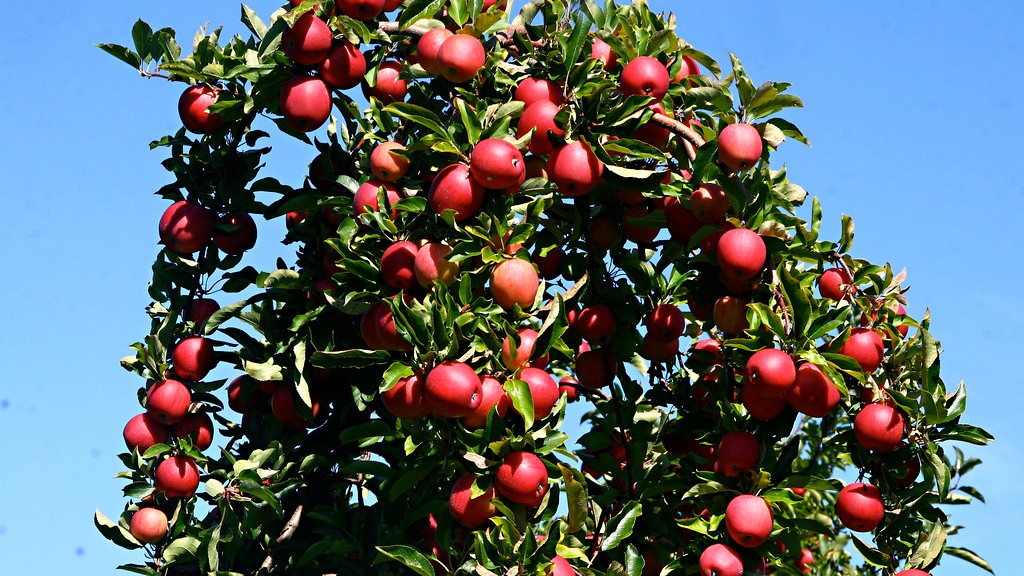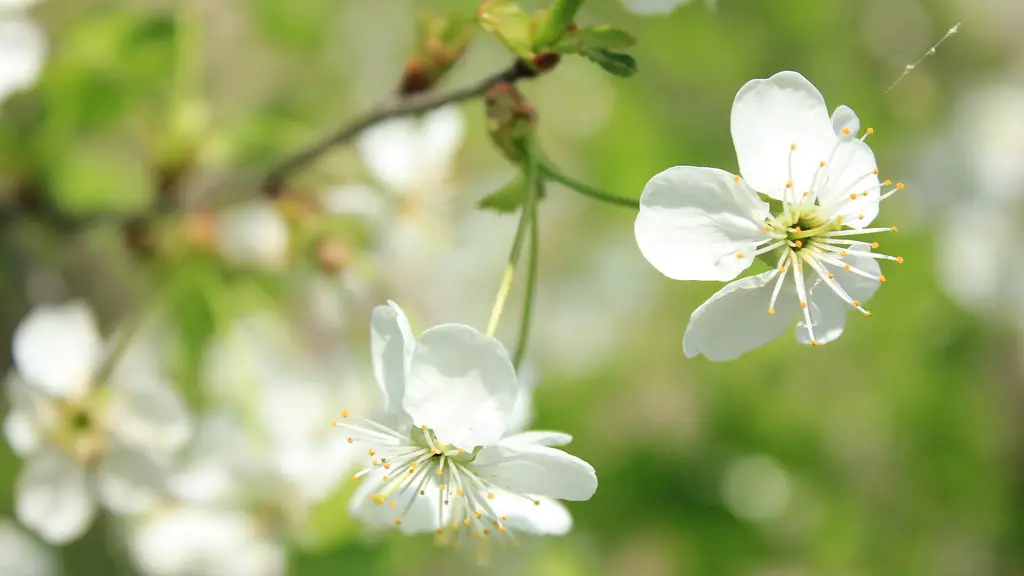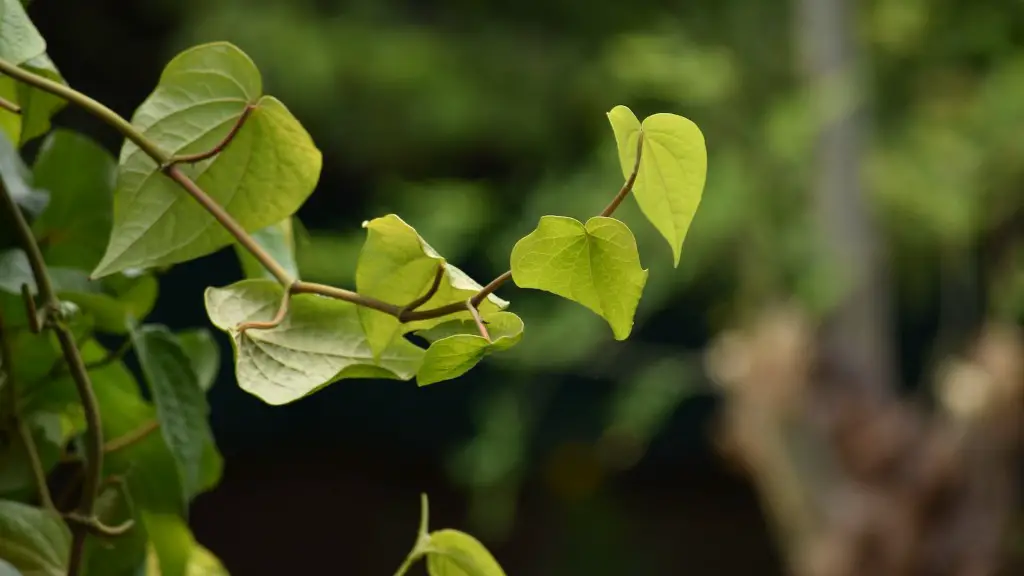Avocado trees are some of the most popularly grown fruit trees, and for good reason. Not only do they have a pleasant aroma and a sweet flavour, but they are incredibly easy to grow and maintain. There are, however, a few tricks of the trade that you should know in order to efficiently grow an avocado tree that will bear fruit over the years. Read on to learn all about growing and maintaining an avocado tree.
Understand Your Avocado Tree
Avocado trees typically grow in the tropics and are native to Central America and the Caribbean. Although they prefer a more tropical climate, avocado trees can survive in colder climates as well. They require lots of sunlight, moderate rainfall, and well-drained soil with a neutral pH. Keep in mind that avocado is a subtropical fruit, so it prefers a warmer climate with temperatures no lower than 25°F during winter.
Choose the Right Variety
There are many different varieties of avocado tree that you can choose from. The most popular varieties are Hass, Fuerte, and Reed. Hass has a dark green skin and is considered to be higher in quality than other varieties. Fuerte has a smooth, pear-shaped green skin and is the most widely grown variety. Reed has an oval-shaped skin and is most widely grown in Mexico. Be sure to research and choose the variety that best suits your climate and needs.
Planting and Growing
Once you have chosen the right variety of avocado tree for your climate, it’s time to plant it. Avocado trees grow best in well-drained soil. To prepare the soil, mix in some organic compost and aged manure to improve fertility. Plant the tree in an area that gets plenty of sunlight and water it regularly, especially during hot, dry periods. Fertilize the tree every month throughout its first year of growth and then every spring afterwards.
Pruning and Training
Pruning and training your avocado tree is essential to get it to grow properly and bear fruit. Pruning helps keep the tree’s structure in good shape and helps control its size. Cut off any lone branches or branches that are growing too close together. Prune the tree lightly each year in the winter months, removing no more than 25 percent of the growth. You can also train the tree to have a main trunk and multiple main branches. To do this, support the trunk and main branches with stakes and tie them in place.
Harvesting and Storage
Avocados are usually ready for harvesting between April and October, depending on the variety. They are ripe when the skin is firm yet slightly soft to the touch. Gently twist the fruit to pick it off the tree. The fruit will keep up to two weeks if stored in a cool, dry place. If refrigerated, it will last up to three weeks.
Common Pests and Diseases
Avocado trees are susceptible to pests and diseases, including aphids, scale, thrips, and root rot. To prevent pests and diseases, keep the tree well-watered and make sure the soil is kept moist. Chemical pesticides can also be used to eliminate any pests or diseases. For severe infestations, you may need to seek advice from a professional.
Avoid Overwatering
One of the most common mistakes made when growing avocado trees is overwatering. Overwatering can lead to root rot and other diseases, so it’s important to be mindful of the amount of water you’re giving your tree. When the top two inches of soil are dry, thoroughly water the entire root zone. It’s also essential to provide good drainage to prevent the roots from becoming waterlogged.
Proper Nutrient Management
Avocados are heavy feeders and need plenty of nutrition to grow properly and bear fruit. The best way to provide nutrients is through fertilizer. Fertilize with a balanced fertilizer that is rich in nitrogen, phosphorous, and potassium. Be sure to follow the instructions on the fertilizer package and fertilize regularly every spring.
Mulching and Weed Control
Mulching and weed control are important for avocado trees. Mulching helps the soil retain its moisture and prevents weeds from growing. Any type of mulch, such as wood chips or straw, is fine to use. It’s also important to keep the area around the tree weed-free. Weeds can compete with the tree for nutrients and water, so it’s important to pull them out regularly.
Pest and Disease Prevention
The best way to prevent pests and diseases is to keep your avocado tree healthy. Provide adequate sunlight, water, and nutrients to the tree and make sure it is planted in well-draining soil. Prune the tree regularly and remove any diseased or dead branches. If you do find pests or diseases, treating the tree with chemical pesticides is usually the most effective way of eliminating them.
Have Patience
Avocado trees take time, care, and patience to bear fruit. Most trees take at least three years before they will produce fruit. When the tree does start to bear fruit, it’s important to not overharvest. Remove only the ripe avocados and leave some for later harvests.
Harvesting and Storage Tips
When harvesting avocados, it’s important to handle them with care. Gently twist the fruit to remove it from the tree and place it in a container immediately. If you want to store the avocados, place them in a cool, dark place. They can also be refrigerated if you need to keep them for a longer period of time. Stored correctly, avocados can last up to two weeks.
Troubleshooting Common Issues
Avocado trees can sometimes suffer from common issues such as poor growth, heavy fruit drop, or poor fruit production. Maintaining soil moisture, getting regular fertilization, and pruning can often help improve these issues. If the tree still isn’t producing fruit, it may be due to a lack of pollinators. Attracting pollinators such as bees or hummingbirds can help improve fruit production.
Reap the Rewards
Growing an avocado tree can be incredibly rewarding, both for the beauty it adds to your yard and for the delicious avocados it will produce. With patience and proper care, you can be sure that your avocado tree will be producing fruit year after year. Step back and enjoy the beautiful trees that you have created, as well as the delicious fruits of your labor.


